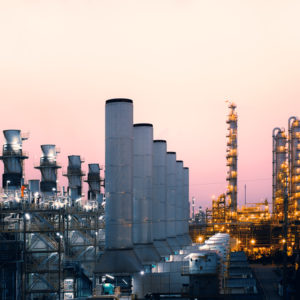Editor’s Note: For another viewpoint, see Point: Western Lands Are a Critical Solution to Climate Change
There are many uncertainties in life, but there are at least three things of which we can be certain: First, the world won’t end in 10 years, or even 100 years, due to human-induced climate change. Second, increased oil and gas production benefits the United States economically and geopolitically. Third, if not undermined by political interference, more oil and gas production will most benefit the poorest people of the world.
Thanks to the fracking revolution — which has unlocked previously unobtainable reserves of oil and gas — the United States has been on the road to energy independence since George W. Bush was president. This also happened to be when oil and gas production on public and private lands began to take off.
The ensuing boom in oil and gas production, coupled with a reduction in energy costs and the creation of millions of good-paying jobs, was almost entirely responsible for bringing the United States out of the 2008 recession.
Ironically, in 2012, President Barack Obama — who often (wrongly) gets praised for presiding over economic growth in his second term — tried to take credit for increased oil and gas production, while in reality doing everything within his power to kill the goose laying the golden egg.
“Oil production has increased to the highest levels in 16 years. Natural gas production is the highest it’s been in decades,” Obama bragged in his 2012 State of the Union address.
Although accurate, this increase came despite Obama’s policies, not because of them.
It’s true that under Obama, oil and gas production increased on private and state lands, but federal lands were a completely different story. Because of Obama-administration-imposed regulations and moratoria, production on federal lands declined under Obama.
President Trump came into office saying he would put America’s interests first. This included putting the United States on the path to energy dominance.
Among other actions, Trump pulled the United States out of the Paris climate agreement at the earliest possible time. In addition, Trump issued an executive order in early 2017, titled “Promoting Energy Independence and Economic Growth,” under which the Department of Interior rescinded policies implemented under Obama that placed large areas of public lands off-limits for consideration of oil and gas leasing and development.
Trump’s order required federal agencies to review all rules and policies that “unnecessarily encumbers” U.S. energy production and set a new goal for the federal government: eliminating regulatory hurdles to increased oil and gas production on public lands.
Due in part to the Trump administration’s decision to allow expanded oil and gas production on public lands, the United States has become the largest energy producing nation on Earth, and now exports more energy than it imports, helping to reduce the nation’s trade imbalance.
Simultaneously, the Trump administration’s expedited approval of liquefied natural gas export terminals, helping our European allies decrease their dependence on Russian natural gas for energy and undercutting Russia’s attempts at energy extortion.
Trump’s policies also offer hope for the 1.2 billion people still living in energy poverty in developing countries.
Only expanded access to oil and gas — which is now starting to be provided to them via the United States — can reliably and relatively inexpensively deliver these people from poverty and provide greater access to safe drinking water; higher-quality sewage and sanitation services; access to modern medical care; robust food supplies from modern agriculture; better education opportunities; and home heating, cooking, lighting and refrigeration.
In the United States, the sustained period of relatively low energy prices stemming from the administration’s energy dominance plan has resulted in higher economic growth and record-low unemployment.
And, quite ironically, despite the warnings of gloom and doom from Trump’s opponents, America is now the world leader in cutting carbon-dioxide emissions.
In fact, since 2006, the United States has reduced carbon-dioxide emissions by more than double the next closest nation. And this was all made possible by fossil fuels, because clean-burning natural gas now dominates U.S. electric power production.
You read that right. While Canada, China, France, Spain and almost all other parties to the Paris climate agreement have increased their carbon-dioxide emissions, U.S. emissions have declined because of our use of natural gas.
Climate change won’t end the world. However, restricting oil and gas production on public lands would undermine the economic progress that has lifted millions, if not billions, from abject poverty.

